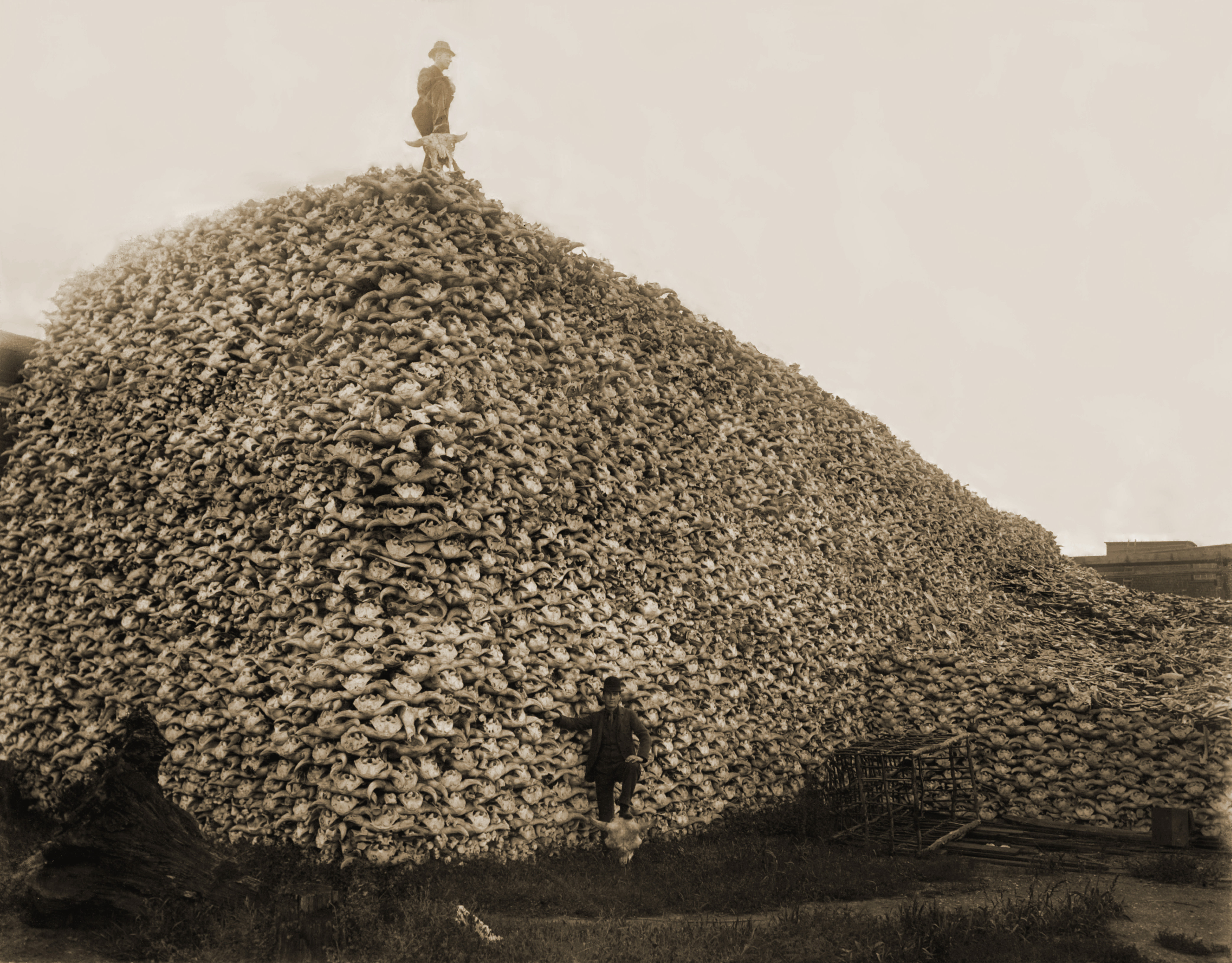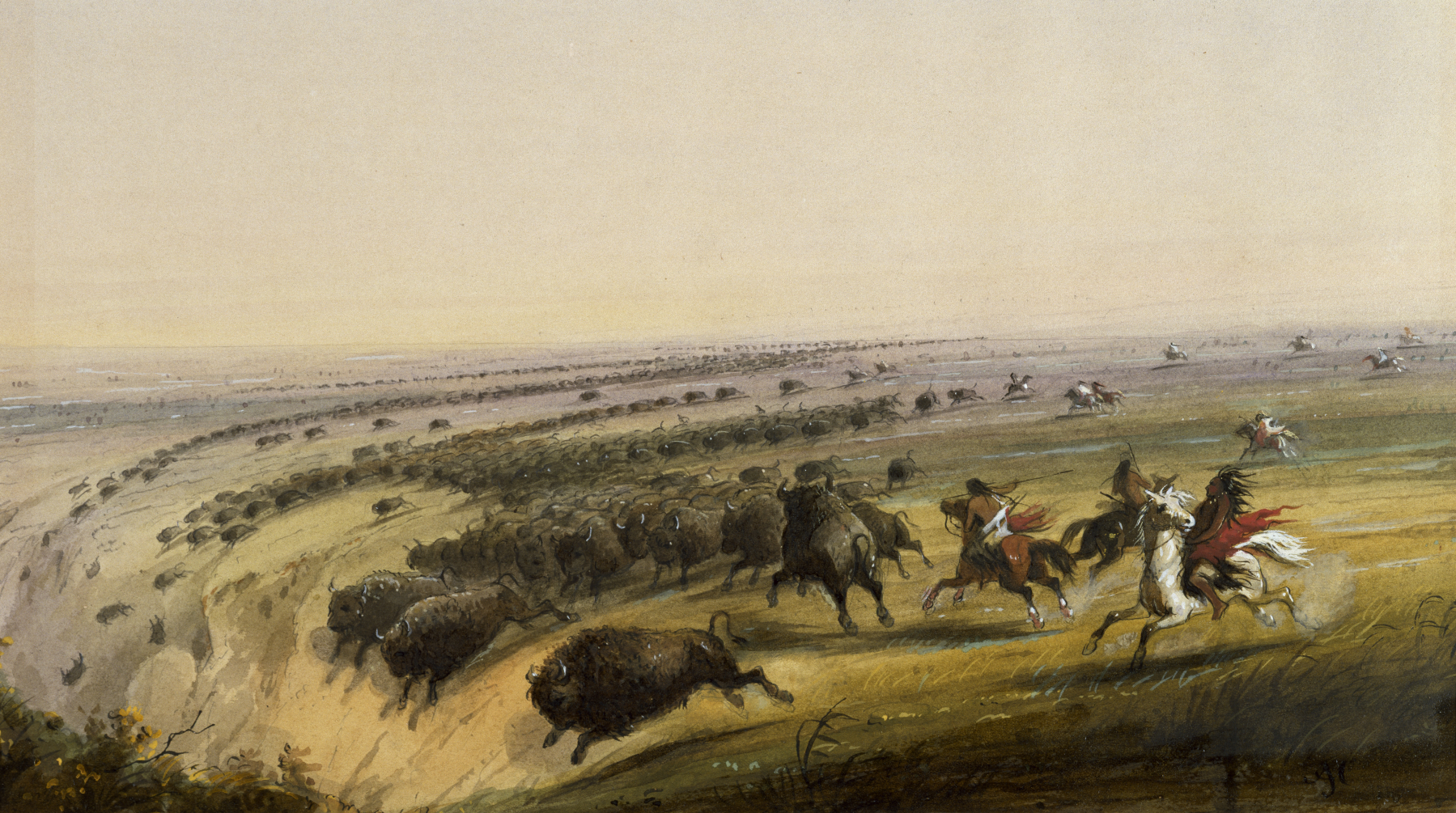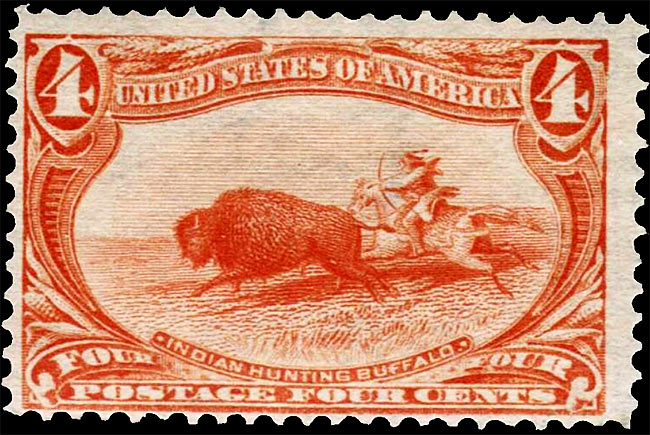

Bison herd grazing at the National Bison Range in Montana

Common Name: Bison
Also referred to as: Buffalo, as well as American Bison, Plains Bison, Prairie Bison, Wood Bison and Woodland Bison
Genus species: Bison bison
Recognized subspecies: Plains Bison, B. b. bison; and Wood Bison B. b. athabascae



Herd of Bison in Yellowstone National Park
One of the buffalo bulls looking back at me shortly after the stampede had passed me by in Yellowstone.

Bison fighting in Grand Teton National Park in Moose, Wyoming

American bison standing its ground against a wolf pack
Mollies Pack Wolves Baiting a Bison.

Buffalo Hunt under the Wolf-skin Mask, 1832–33 oil 24 x 29 in. Smithsonian American Art Museum, Gift of Mrs. Joseph Harrison, Jr. Before they acquired horses in the eighteenth century, Indians developed ingenious methods to hunt buffalo on foot. One method was the stealthy approach in disguise. Since more than half the calves born each year died, bison tolerated the packs of wolves that took care of the carcasses. Buffalo were unprepared, however, for Indians in wolves' clothing, who approached "within a few rods of the unsuspecting group, and easily [shot] down the fattest of the throng."

Bison being chased off a cliff as seen and painted by Alfred Jacob Miller.
It
is true that various Plains Indians would occasionally chase buffalo
over a small cliff, but Miller probably never saw this scene and
therefore exaggerated it a bit. The Indians, when they found a suitable
bluff, would conceal themselves behind the rocks with hides. When the
herd would start to move towards the bluff, the Indians would jump up
from behind their rocks, shouting and waving the hides, keeping the
buffalo moving toward the cliff. In later versions of this picture,
Miller exaggerated the cliff even more. Had the Indians driven buffalo
over such precipices, the meat would have been too badly smashed to eat
and the bones would have been broken.

A wood bison around Coal River in Canada

The 1935 Buffalo nickel—this style of coin featuring an American bison was produced from 1913 to 1938.

First postage stamp with image of bison was issued US in 1898—4¢ "Indian Hunting Buffalo". Part of the Trans-Mississippi Exposition commemorative series.
The American bison (Bison bison), also commonly known as the American buffalo, is a North American species of bison that once roamed the grasslands of North America in massive herds.
They became nearly extinct by a combination of commercial hunting and slaughter in the 19th century and introduction of bovine diseases from domestic cattle, and have made a recent resurgence largely restricted to a few national parks and reserves.
Their historical range roughly comprised a triangle between the Great Bear Lake in Canada's far northwest, south to the Mexican states of Durango and Nuevo León, and east to the Atlantic Seaboard of the United States (nearly to the Atlantic tidewater in some areas) from New York to Georgia and per some sources down to Florida. Bison were seen in North Carolina near Buffalo Ford on the Catawba River as late as 1750.
Two subspecies or ecotypes have been described: the plains bison (Bison bison bison), smaller in size and with a more rounded hump, and the wood bison (Bison bison athabascae)—the larger of the two and having a taller, square hump
Furthermore, it has been suggested that the plains bison consists of a northern (Bison bison montanae) and a southern subspecies, bringing the total to three.
However, this is generally not supported. The wood bison is one of the largest wild species of bovid in the world, surpassed by only the Asian gaur and wild water buffalo. It is the largest extant land animal in the Americas.



Source: https://en.wikipedia.org/wiki/American_bison
No comments:
Post a Comment